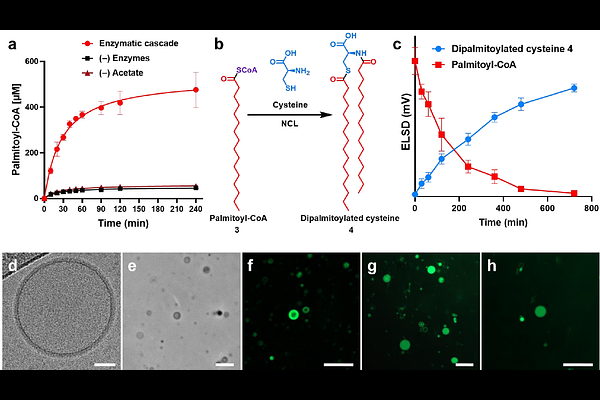De Novo Protocell Membrane Formation Fueled by Primitive Metabolites

De Novo Protocell Membrane Formation Fueled by Primitive Metabolites
Khanal, S.; Fracassi, A.; Harjung, A.; Burkart, M.; Devaraj, N.
AbstractLipid membranes define cell boundaries, acting as gatekeepers for transport and signaling. A central principle in biology is that all cellular membranes descend from a common ancestral membrane, as they cannot be generated in the absence of preexisting lipid structures. It is thus unclear how the first protocell membranes originated from membrane-less precursors. Here we demonstrate the de novo generation of lipid bilayers in the absence of any preexisting membranes, membrane-bound proteins, or lipid nanostructure templates. Using acetate as a two-carbon precursor, lipid tails are constructed by soluble enzymes and spontaneously conjugate to cysteine backbones, forming diacyl lipids that assemble into vesicles. Pore-forming peptides facilitate precursor transport into vesicles, allowing the continuous generation of new lipids. Formation of glycolipid membranes creates compartments that can maintain proton gradients. The de novo formation of membrane bilayers using primitive chemical building blocks may have been an intermediary step between primitive prebiotic biochemistry and the emergence of cellular life.